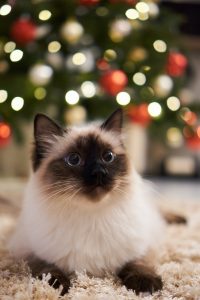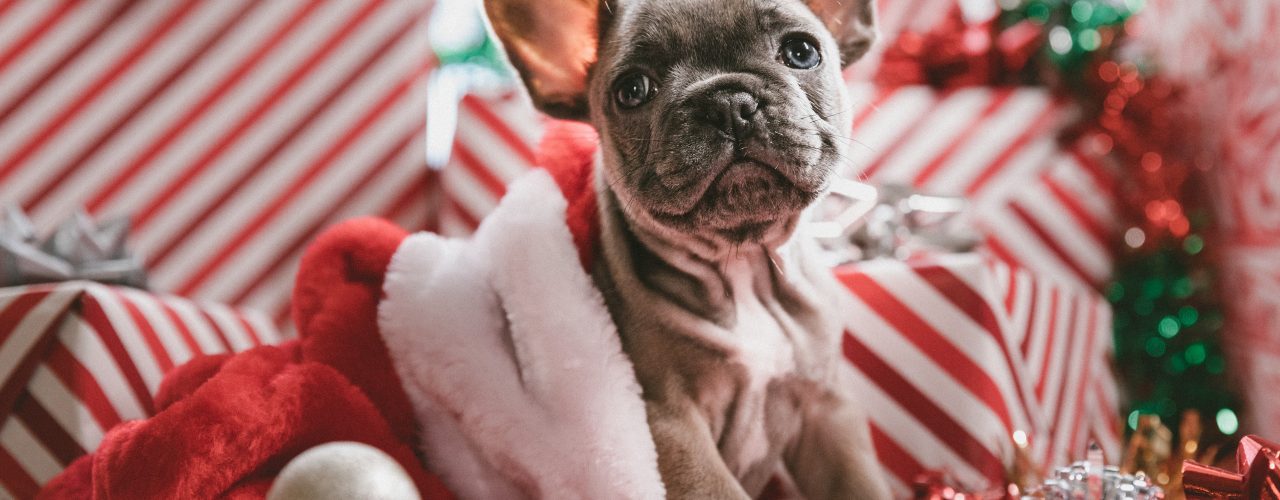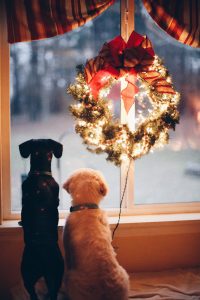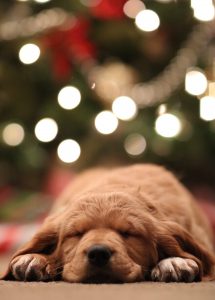
The holiday season is upon us, and decking the halls with festive décor is one of the best parts of spreading holiday cheer. But with so many bright colors and tempting new scents, these delightful additions can pose a danger to curious pets. Luckily, there are simple steps you can take to remove these holiday pet hazards to ensure you and your furry friend safely enjoy the festivities.
Here are some tips on celebrating the festive season at home while also keeping it safe for your furry companions. From toxic plants to décor items to avoid, here are things to watch out for as you include pets in the festivities.
Holiday décor hazards to watch out for
Secure Christmas trees and décor
Holiday decorations can make this time of year very festive, but they can also be dangerous and even poisonous for our pets. It is very important to make sure that all decorations are not going to fall down. Make sure that your Christmas tree or other large display items are anchored. Artificial trees are recommended to avoid your animal drinking the tree water and keep Christmas lights and ornaments out of reach of your pets. You can still have these items in your house for the holiday season, but make sure they’re secured.
Keep an eye out for chewing and swallowing hazards
Be mindful of things pets can chew or swallow during Christmas time. Normally all of the areas in your home are pet safe, but as you add your festive items, this might change. Chewing light cords could cause electrocution, and the added plants can be dangerous. Mistletoe, holly, and Poinsettia leaves can be toxic and tree needles can irritate their mouth and stomach. Other problimatic items are tinsel, ribbons, string, batteries, water in the tree base, as well as food that might be out at the holiday party. Foods such as chocolate, fatty leftovers, bones, mincemeat, grapes, raisins, and even alcohol are also things you don’t want your pet to swallow on accident.
Be mindful of holiday plants that can be hazardous to pets
Avoid toxic plants and keep them out of reach
Animal owners should be cautious of certain holiday plants around the house this time of year. Live Christmas trees are safe, but water at the trunk base can upset sensitive stomachs from fertilizers sprayed on the tree. Holly and mistletoe should be avoided or displayed on an elevated surface as these are poisonous and can make your pets sick if consumed.
Consider faux holiday plants to avoid an emergency vet visit
Several holiday plants are toxic and if ingested, they can lead to vomiting and an expensive trip to the veterinarian. The best option is to stick to faux plants, which can be just as beautiful.
Move holiday plants and flowers to a safe location
Knowing which plants could be holiday pet hazards is imperative. Place toxic holiday plants in places out of reach from your pets and be sure to clean up any dead foliage around the plants.
Food and drinks to avoid
Avoid giving your pets table scraps
It’s best for pets not to have human foods during the holidays or in general. Many human foods are toxic to pets and can cause GI issues.
Pay extra attention to wrapped presents with food inside
Make sure to keep presents that contain food, candy, or chocolate tucked away or put up where they can’t be reached. They can smell that deliciousness through the wrapping. No one wants to take a trip to the emergency clinic over the holiday season. If you have concerns about something your pet has gotten into, don’t hesitate to call them or take a trip to the vet if needed.
Keep sweet treats out of reach
Don’t forget that candy bowls are full of potential toxins. Chocolate, gum, and the sweetener xylitol are hazardous to pets. Symptoms of chocolate poisoning may include vomiting, diarrhea, rapid breathing, increased heart rate, and seizures. And xylitol, even in small amounts, can cause a sudden drop in blood sugar and subsequent loss of coordination and potentially seizures.
Pets and holiday house guests
Prepare your pets for the arrival of house guests
Make sure your pets have a safe, quiet space in your home to get away when the holiday hustle and bustle gets to be too much. And don’t forget to make sure dogs and cats are wearing collars with ID tags; with people coming in and out over the holidays, identification is the most important way to help reconnect with your pets if they get out of the house.
Create a safe and quiet area for pets
If your pet is stressed by visitors, keep them in a quiet room with gentle music away from the bustle of guests.
Use pet-safe cleaners when preparing your home for guests
Holiday hosting means a thorough cleaning of your home. Harsh chemicals and bleach not only compete with your favorite cooking aromas but are also harmful to your pets. Instead, use pet-sensitive, pH-balanced cleaners that complement the chef, like OdorPet and KennelSol disinfectant.
Don’t force interactions
Small holiday gatherings may be returning this year, but your pets may not be so welcoming of strangers in your home. To avoid any potential problems, ask your guests not to approach your pet and let them keep their space. If it’s a dog, hand your guests some dog treats so the dog can approach them and if your cat is scared, leave them alone, and they’ll come out when they feel safe. For some tips on introducing your pets to some new places (it can be applied to people) check out this link!
Keep pet escape artists safely contained with a pet gate
With guests coming and going during the holidays, consider buying a doggie gate for your front entrance. They are easy to install and will keep Fido in the house during those long goodbyes at the door, rather than dashing through the snow and possibly into danger.
Going out-of-town? Consider a professional pet sitting service
If you happen to travel during holidays and use a professional pet sitting service while your pets stay home, meet your pet sitter beforehand and discuss your pets’ routine in detail. This meeting is equivalent to the on-the-job training where you discuss all the areas where your pets are allowed, feeding instructions, and a full care plan.




